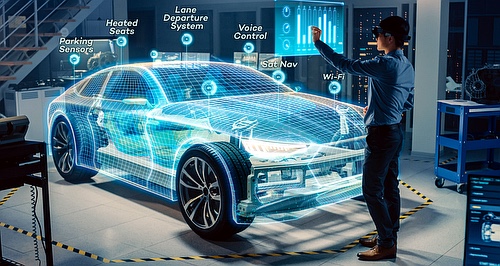News - General News - TechnologyConsumers ‘ready’ for automotive subscriptionsMORE BILLS: Toyota will be the first ‘subscription’ cab off the rank in Australia with vehicle subscription services offered on its new Corolla Cross.
Vehicle subscription services are ‘go’ according to a new report by VNC Automotive17 Oct 2022 TO COVER the development cost, provision and projected demand for in-vehicle connectivity, not forgetting the creation of a new revenue stream, car-makers are increasingly turning to the controversial concept of Over The Air (OTA) subscription services.
It should come as no surprise for the average punter already having their wallet drained by monthly bills for the phone, TV, insurance, health cover, security and a myriad other services.
Plenty of car-makers already have or have under development subscription models that they will introduce soon or not too far down the track.
Toyota Australia this week announced such a system on their Corolla Cross and Hyundai has monumental plans for Software Defined Vehicles that will include subscriptions. VW is also figuring out how to apply subscription services with no doubt many others following suit.
It provides a new opportunity for the automotive manufacturing sector to make an extra buck but ‘push back’ from consumers may be an issue for the system’s broad adoption especially given the parlous global economic conditions prevailing at the moment.
Not so, according to a statement issued this week from ‘connectivity expert’ VNC Automotive which, apart from having a vested interest in the broad implementation of the technology, claims a question mark hangs over whether consumers are as against the idea of subscribing to vehicle features as many believe.
“Consumers are no stranger to the subscription model, now firmly a part of daily life for many, with millions of people regularly paying to use services such as Netflix, Amazon Prime and Spotify, as well as subscribing to deliveries of groceries,” said the report.
“This familiarity may smooth the transition for manufacturers as they look to recreate that model inside their vehicles.”
With the subscription model, rather than paying for an expensive option at the point of sale, there’s the potential for customers to switch on or deactivate options according to their needs and budget.
For instance, it’s likely that heated seats won’t be necessary in summer months but could be activated for winter driving or simply as and when required for seasonal road trips.
VNC says there’s an obvious tension between OEMs wanting to maximise their revenue, and customers wanting to use the hardware that’s already fitted to their vehicles.
But the subscription model could offer a personalised and dynamic driving experience, assuming OEMs streamline the payment structure beyond annual fees.
Modern vehicles aren’t visiting the dealership as frequently as OEMs would like, thanks to longer service intervals. But regular OTA software updates offered by OEMs could be billed as ‘digital valets’, enhancing existing features and adding new ones.
Such ‘refreshes’ ought to strengthen the relationship between OEMs and used vehicle owners.
Subscription features also make the car more configurable for subsequent owners, allowing them to specify features as they would with a new car but without the associated high purchase price of a factory-fresh vehicle.
Additionally, customers switching between vehicles could have their subscribed features move with them, with options activated according to each driver’s subscription package. These packages represent an opportunity for OEMs to ‘lock in’ customers to a personalised subscription ecosystem, encouraging brand loyalty.
Citing flexibility, customer engagement and future upgradeability, VNC Automotive product engineering director Peter Galek said: “Exciting new features or upgrades for a vehicle are a strong incentive for traditional vehicle users to subscribe. Such models give OEMs the best chance of marketing more features over the vehicle’s lifetime”.
Meanwhile, new figures from global public opinion and data company YouGov show customers are more tolerant and accepting of rented vehicle access. Thirty per cent of Brits and Americans agree with the statement: “I don’t want to be locked into owning a car because my needs may change”.
The same survey shows a shift towards acceptance of car subscription models such as Care by Volvo which allows users to choose vehicles according to their lifestyle requirements.
Younger drivers are tending to shun the ownership model, seeing vehicles as a transient commodity – it is the experience which counts, not the ownership. The same is true of recorded media such as CDs and DVDs – millennials tend to prefer the flexibility and freedom offered by streaming services, says VNC.
“Witness the monumental shift in the entertainment industry for streaming music and movies. Short-term leases and shared car ownership schemes like Zipcar and Co-Wheels versus having a car sitting in the driveway show customers are open to the idea of subscriptions,” said VNC Automotive sales engineering director Agustin Almansi.
“It’s clear to see that convenience and choice are key drivers behind a subscription model for certain vehicle features and, if such a move does deliver the flexibility that customers increasingly expect in everyday life, there’s a very strong case that such an approach will become the norm rather than the exception.”  Read more13th of October 2022  Software Defined Vehicles to rule the roadsHyundai Motor Group announces future roadmap for Software Defined Vehicles (SDVs) |
Click to shareGeneral News articlesResearch General News Motor industry news |
















Facebook Twitter Instagram